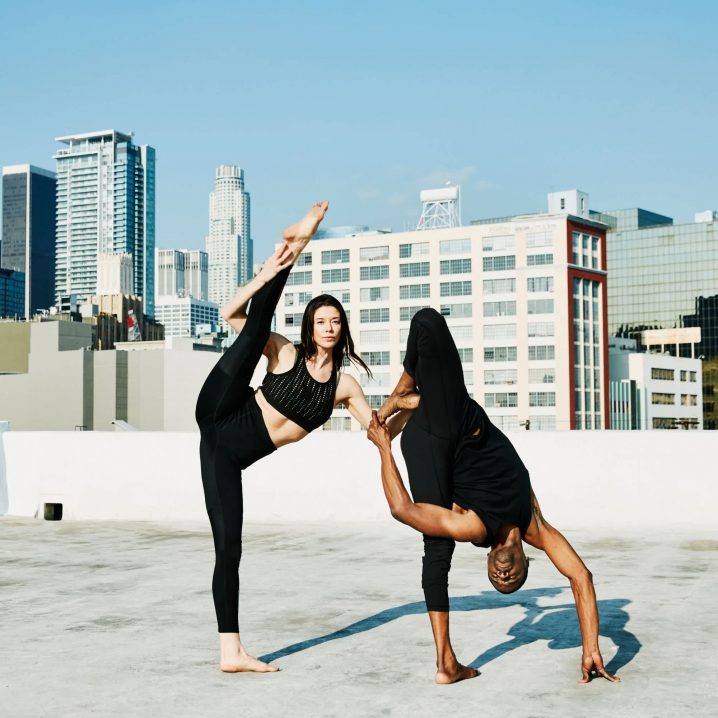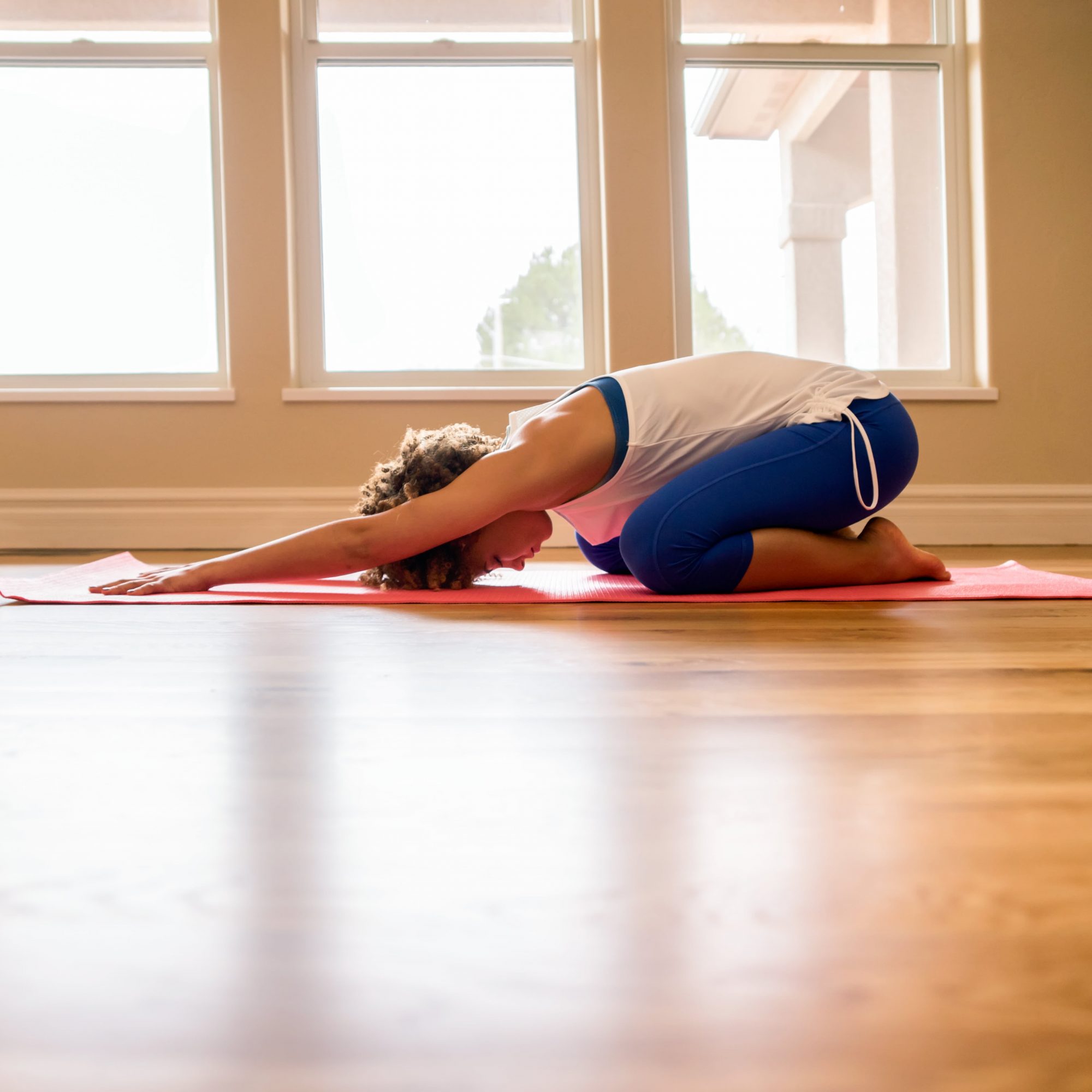
- POPSUGAR Australia
- Fitness
- Do You Need a Personal Flexologist? I Tried the Goop-Approved Fitness Trend
Do You Need a Personal Flexologist? I Tried the Goop-Approved Fitness Trend

You’ve heard about a personal trainer, but have you heard about a personal stretcher?
About six years ago, I was forced to learn how to stretch after I experienced a neck injury and then a knee injury in the space of about six months. The two injuries changed my life. I had been working for years as a makeup artist spending long days on my feet with my body tilted to the side. I started getting such bad neck pain that I spent my days off paralysed on the couch and had severe migraines. Then my knee went.
I’ve spent a lot of time in the physiotherapist’s waiting room since then. I’ve learnt that a slight spinal rotation causes me a tendency for lopsidedness which needs to be corrected with pilates, yoga, and you guessed it, stretching. If it’s not, the muscles on the stronger side overcompensate, seizing up to keep my body stable. The muscle tension I’d experienced my whole life resulted in the kind of instability that landed me in surgery.
To manage all this I’ve developed a pretty good stretch game, so when I heard about professional flexology I was sceptical – maybe helpful for others, but surely not stretch-queen me?
However, following a bad bought of COVID that had me off exercise for weeks, I was experiencing particularly bad pain. I also read that wellness queen Gwyneth Paltrow outsources her stretching – if it’s good enough for GOOP it’s good enough for me.

I imagined at StretchLab I’d find myself amongst Sydney socialites and professional athletes. Turns out, Brad Walker, Chief Stretch Advisor at Stretch Lab, thought the same.
“In the beginning, we thought that most of our customers would be sportspeople and athletes, but it turns out we have a much broader appeal. We have clients from all different age groups and backgrounds,” Walker tells me.
From teenage athletes and spritely seniors to middle-aged office workers and active mums with young kids, Walker has found demand for assisted stretching comes from all demographics.
So, Why Assisted Stretching?
Very simply, assisted stretching allows you to try stretches you wouldn’t be able to achieve without an extra pair of hands. “It allows us to go deeper into stretches and hold those stretches for longer periods,” Walker tells me. “We can stabilise the client, which allows the flexologist to get a much better stretch for the client.”
StretchLab also specialises in PNF or proprioceptive neuromuscular facilitation – sounds fancy for the humble stretch. Walker explains that PNF is a goals-focused form of advanced flexibility training rather than passive stretching. He explains, “PNF involves stretching and contracting the targeted muscle group. The contraction phase of the PNF stretch helps to relax the muscle group, which allows for greater flexibility during the stretching phase. PNF stretching is one of the most effective forms of stretching for improving flexibility and increasing range of motion.”
This is particularly helpful for professional athletes who need to maintain a wide range of motion to prevent injury: “Flexibility is the icing on the cake for great sports performance. It complements all other aspects of fitness and sport, and every professional athlete takes their flexibility very seriously,” says Walker.
The StretchLab Experience:
Paltrow-ready in my activewear, I headed off to StretchLab – completely unsure what to expect.
My flexologist, Natalie, has a fourteen-year background in yoga, pilates and personal training – she kicked off our session with an assessment where we discussed my pre-existing injuries, pain points and stretch goals. Since stopping Pilates my neck and shoulder were causing me a lot of pain, and I was experiencing shooting sensations in my lower back throughout the day.
Having briefed Natalie, I lay down on an elevated, padded platform. The stretching commenced. It’s a little unnerving to have someone else stand over you moving your body around. Initially, I felt pretty vulnerable. Natalie’s experience as a personal trainer and instructor was evident though. She checked in with me regularly and told me exactly where and why she would be touching me.
Having been out of pilates and yoga for weeks, she noted that while I complained of pain in my neck and upper back, my hamstrings and side glutes were incredibly tight. Natalie also pointed out that one side of my upper back had lost far more muscle than the other during my COVID-induced convalesces, and that this was probably contributing to the pain I was experiencing.
Natalie says at StretchLab, they throw the concept of “no pain, no gain” out the window. With clients who range in age from 14 to 90, some people want tough, intense stretches but, “with one older woman, we simply practised breathing exercises while I held her hand.”
One of the best things about having someone else stretch you is you can access areas that would be impossible to do safely on your own (if you’re like me and have found yourself unable to get out of a pigeon pose after getting a little too confident, you’ll know what I mean)

But it was also a powerful feeling to put yourself in the hands of another person. After two years of social distancing, and lockdowns that prevented us from exercising with other people, it’s a surreal experience to have another person so close to you.
While we stretched, Natalie and I talked about my COVID recovery, the pace of life now the world was opening back up, and the intensity of returning to in-person activities. I started to realise why my body was feeling so exhausted with the addition of an extended COVID recovery.
Because of how de-conditioned my body was, we went light on the neuromuscular facilitation. I did insist on trying it though. It involved pressing back against Natalie’s gentle pressure and then releasing, followed by stretching. It was an odd feeling, and my arms were sore the next day. By moving quickly between dynamic (pushing forward) and passive (being pulled) stretches the muscle tone is developed while you relax and lengthen, increasing strength and range of motion.
The Upshot:
I left with some custom stretches I could do at home; they focused on my lower body rather than my upper body. I’d been determinedly stretching my back and neck to no avail, but Natalie said I could very well be holding tension in my neck because my lower body wasn’t supporting me. Turns out she was right. My favourite was a 90-degree forward fold, which I do with my legs crossed at the ankles. It stretches my hamstrings and my glutes and upper thighs and lower back and, as I don’t need to lay down to do it, I can do it basically anywhere.
It’s important to note that flexologists are not physios, so do not pass go before seeing a physio if you have an active injury. However, if you work out a lot or have persistent pain points that need to be managed, a StetchLab membership will help you fine-tune your flexibility, keep track of injuries and get more out of your workouts.
StretchLab Membership Pricing:
StretchLab has a number of payment options including one-off visits. The most popular is one-on-one memberships for a set number of either 25-minute or 50-minute stretching sessions. These include:
Four sessions a month: 25 minute ($219) 50 minute ($399)
Eight sessions a month: 25 minute ($399) 50 minute ($759)


